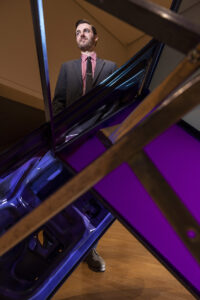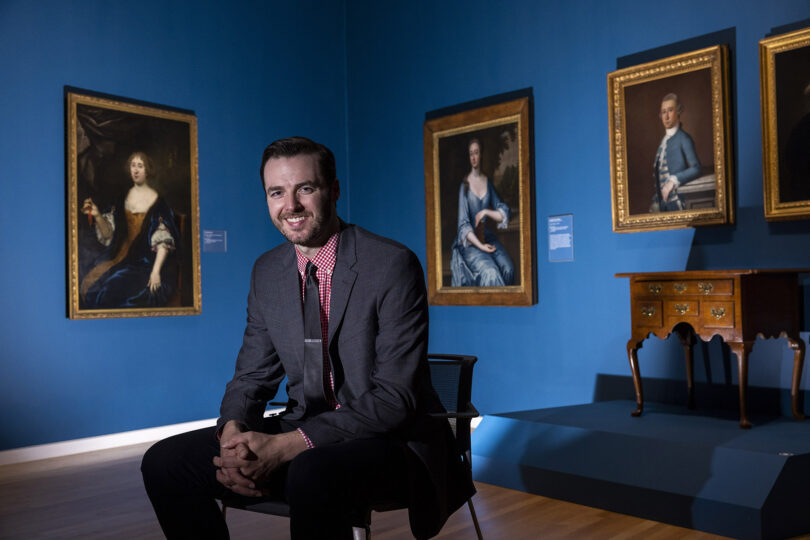All museum curators are jugglers, working on exhibitions, research, writing, acquisitions, tours and more, but Jeffrey Richmond-Moll, who started as the Georgia Museum of Art’s curator of American art in August 2019, has been exceptionally busy during the past two years.
About half a year after Richmond-Moll started, the COVID-19 pandemic hit, meaning that he had to figure out new ways to achieve everything that he had planned. A large gift of contemporary art from John and Sara Shlesinger meant new goals and new works that needed to be researched and displayed, and a major gift of 20th-century photography in late 2020 added to his expanding responsibilities.
Nonetheless, he’s managed to organize numerous exhibitions, write a book on magic realism, participate in symposia around the country, reinstall many of the museum’s permanent collection galleries and establish a new program of tightly focused exhibitions designed to illuminate works from the collection in depth.

Jeffrey Richmond-Moll has curated numerous exhibitions since he began working at the Georgia Museum of Art in 2019 (Photo by Dorothy Kozlowski/UGA)
“I feel lucky to be a curator on the campus of a great research institution like the University of Georgia, where I can strike up exciting collaborations with faculty and students from a wide range of disciplines: studio art, art history, fashion history, forest ecology, southern migration and foodways, to name a few,” he said. “I’m thrilled about the many cross-disciplinary connections that my upcoming exhibition projects are making possible at the Georgia Museum of Art.”
Richmond-Moll grew up immersed in American history, in the Princeton, New Jersey, area. But he didn’t fall in love with American art until college, when he enrolled in a class taught by renowned art historian John Wilmerding. Like many courses at Princeton, the class took a hands-on approach and included many visits to the university art museum. Richmond-Moll had originally considered studying Italian architecture, but the way Wilmerding encouraged students to interpret art in relation to the literature, economics, politics, technology, or architecture of the day turned his interest permanently toward American art history.
Time spent in Princeton’s museum as an intern and a research associate made him see that an academic museum was an ideal place to make connections among disparate disciplines. He wrote his senior undergraduate thesis on African American artist Henry Ossawa Tanner’s biblical pictures, an opportunity to examine the intersection of race, politics, religion and art. The Pennsylvania Academy of the Fine Arts in Philadelphia was planning a large retrospective of Tanner’s work around the time he graduated, and there Richmond-Moll applied his newfound expertise to the curatorial field. Throughout his doctoral studies at the University of Delaware, he continued to pursue museum projects and determined that an academic art museum was the right fit for him.
“Part of the challenge and excitement of being a curator is that our work and our writing serve so many different kinds of communities,” said Richmond-Moll. “We write books and articles to engage our discipline, we craft wall labels and educational materials to interact with visitors of all ages, and we give tours that bring us face to face with the local and university community. I am also excited that, at the Georgia Museum of Art, I can think about how we can expand those audiences and share more expansive approaches to what it means to be ‘American’ and what ‘American art’ can be.”








